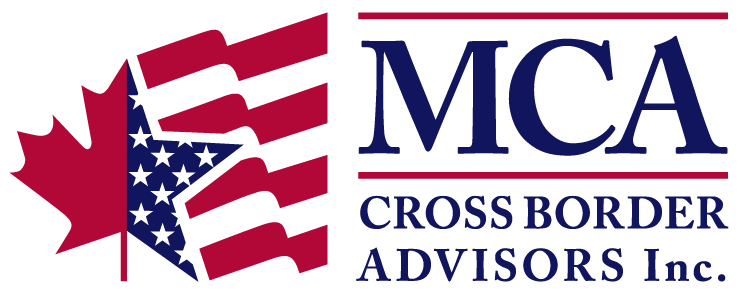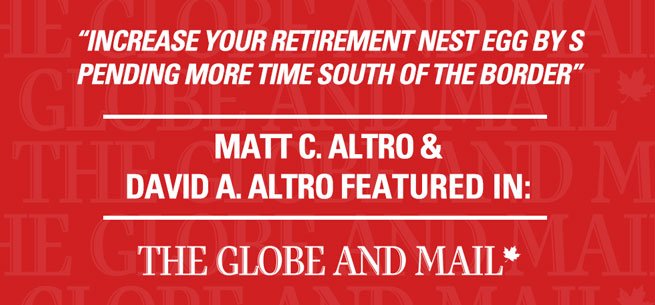We are very pleased to share that David Altro and Matt Altro were asked to prepare a special for The Globe and Mail, which was published on February 28, 2018. Their article titled “Increase your retirement nest egg by spending more time south of the border” provides insight into how the RRSP is taxed differently by the CRA upon withdrawal depending on where you live in retirement, and details additional possible tax savings with respect to the Old Age Security pension for Canadians living in the US during their retirement.
To read the article you can see it in part below, or click here to view it on The Globe and Mail’s website.
Increase your retirement nest egg by spending more time south of the border
Matt Altro and David Altro
The Globe and Mail
February 28, 2018
February is RRSP season, and that means thinking about retirement. In the 21st century, Canadians are living longer, private pensions are less common and inflation continues to erode purchasing power.
Canadians are crunching the numbers and fearing that they may not have enough to retire and live the lifestyle they want. If spending less or working more do not sound attractive, consider another way to make more of your retirement nest egg: pay less tax.
Registered retirement savings plans (RRSPs) are great retirement savings vehicles. Depending on your income level and which province you live in, you get a tax deduction of up to 54 per cent when you make a contribution. Your money then grows, tax-deferred. Eventually, upon withdrawal, funds in the RRSP are subject to tax at the same high marginal rates of up to 54 per cent.
Many Canadians are surprised to hear that Canada taxes those who become non-residents much more favourably than those who remain Canadian tax residents. For example, non-residents of Canada who move to the U.S. can withdraw their RRSPs at much lower tax rates. Rather than pay tax at the top marginal rate of 54 per cent mentioned above, Canadians who become U.S. residents can withdraw from their RRSPs at 25 per cent. With proper planning, the tax rate can drop even lower – to 15 per cent. On a $1-million RRSP, that is a savings of nearly $400,000 of tax. Furthermore, there are opportunities to characterize the tax paid to Canada as a foreign tax credit, which can be used in future years as a way to grind the tax bill down even further.

